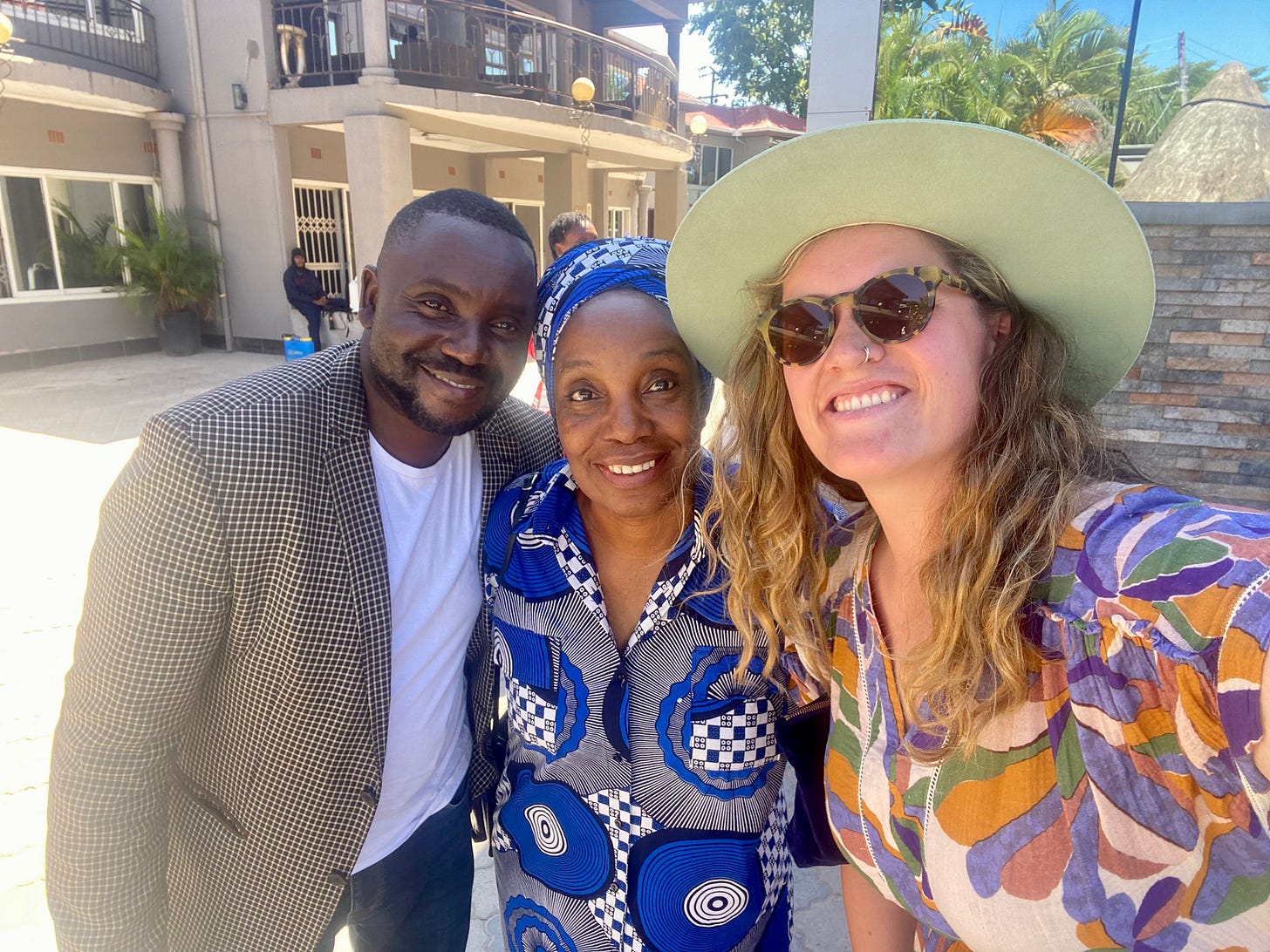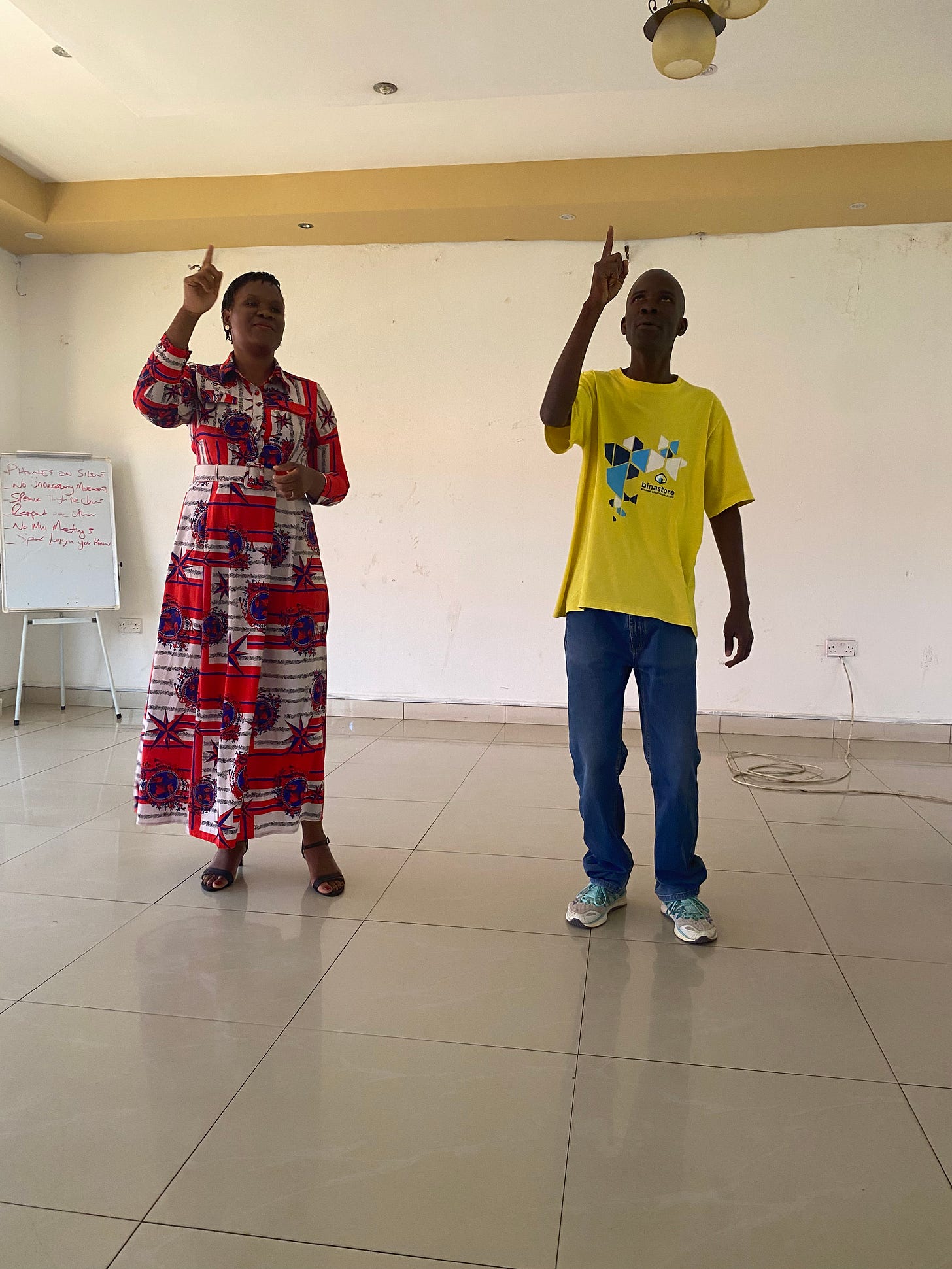Visiting a Deaf Church in Zambia
Amazing but reminded me of the sign vs. spoken language divide
Hello everyone,
I am stoked to have you here with me again on F.O.D.E. Today, I wanted to continue the conversation about our trip to Zambia earlier this year. As I mentioned in my previous post, Zambia is a country that holds a special place in my heart and the experiences I had here will stay with me forever.
The other experience, alongside my stay in the village, that stood out was my visit to a deaf church in Lusaka. It was an incredible opportunity to witness the power of sign language and its ability to communicate and connect people. The church held services entirely in sign language, which highlighted how facial expressions and body language can be incredibly effective in telling a story. I would love to delve into this experience more and share my takeaways with you.
Image Description: (Left to Right), Pastor Lewis (who ran the Deaf church), Mulenga (an amazing icon, who has done so much for Zambia & for the Deaf community) and myself. Pastor Lewis is wearing a white top with black pants and a black + white checkered blazer. Mulenga is wearing a navy, black and white patterned top + head scarf. I am wearing a beige, dark yellow, blue, green floral flowing dress with tortoise colour sunglasses and green hat.
Attending the deaf church was a truly unique and captivating experience for me. Although I communicate through spoken language and wear a cochlear implant, I was fascinated to explore this community and its mode of communication as a deaf person. The service itself was unlike anything I had experienced in a traditional church. It was held in a classroom, and the pastor delivered his message in sign language. Other members of the congregation also stepped up to share sermons using sign language. The atmosphere was electric, with people signing, stomping, and clapping along to the songs, which was definitely a highlight for me.
Thankfully, a translator had been arranged for my friend and I, so we could understand what was being signed. Despite the translator's help, I felt a twinge of regret that I didn't have the ability to understand sign language more fully, particularly as I am deaf myself. While sign languages across the globe share some similarities, every country has its own distinct sign language. If I had learned British Sign Language or Auslan, I would still need to learn Zambian sign language to fully comprehend the service without a translator - just as with spoken language, each country has its own unique dialects.
Towards the end of the service, I was asked up to the stage to introduce myself. I was a little apprehensive, especially because I was unable to communicate using sign language even though I am a deaf person. I addressed the audience and displayed my cochlear implant while the interpreter continued translating, which facilitated uninterrupted communication. I learnt some fundamental signs such as "thank you" by observing the service, and integrated some of these signs when I was introducing myself (admittedly not super well). Nonetheless, I found it intriguing that I could comprehend some sign language easily because visual modes of communication come naturally to me. This contrasted greatly with the challenge I faced when I attempted to learn basic spoken phrases during my visit to Mugurameno village. It required Time and Tide team members repeating them repeatedly while I repeated them back before they finally sank in. Evidently, it is much easier for a deaf person to learn visual modes of communication than spoken ones.
Image Description: Two of the congregation members conducting church songs in sign language, where they are pointing their right finger upwards. On left, is a woman in red, purple and white long-sleeved flowing dress with black shoes. On right, is a man wearing a yellow t-shirt with blue/black/white illustration printed on and blue jeans, with grey sneakers.
To be honest, I am conflicted about my lack of understanding of sign language. The chance to visit a Deaf church in Zambia was amazing and I loved it. However, for me it opened up the can of worms of the spoken vs. sign language divide that can be rampant in the d/Deaf community. While hearing devices like cochlear implants and hearing aids have given many of us in developed areas the ability to speak and integrate into the world in that way, these developments have been contentious within the Deaf community. Despite the incredible benefits of technological advancements, sign language, the primary form of communication within the Deaf community, has faced controversy and threatened a rich culture with a longstanding history. This topic is contentious, and I plan to discuss my thoughts and position on this in a separate blog post.
I want to thank everyone who has subscribed to our blog so far and those who continue to support me. It is your support that drives me to keep sharing my experiences. Thanks for reading, and as always, stay tuned for more from F.O.D.E. I've got plenty more to share with all of you!
Take Care,
Tilda x





